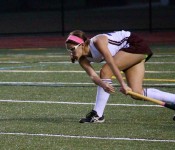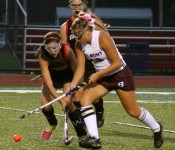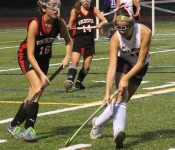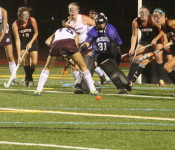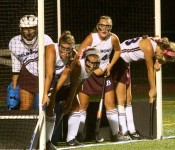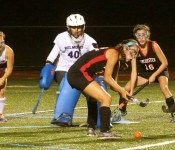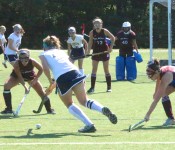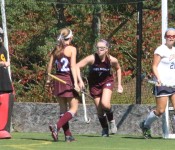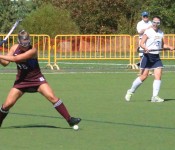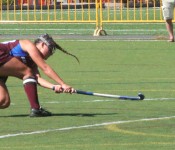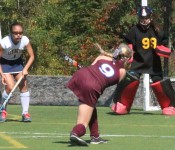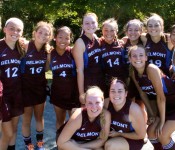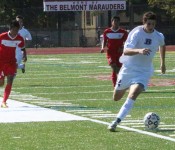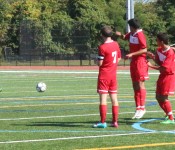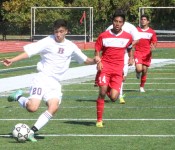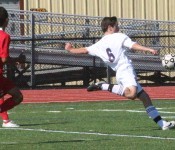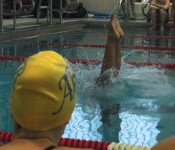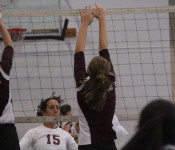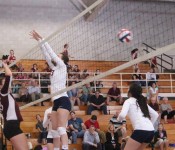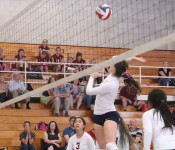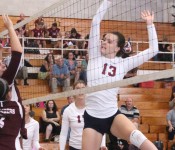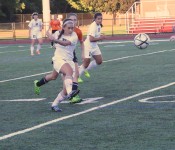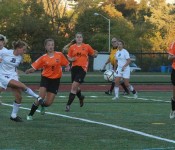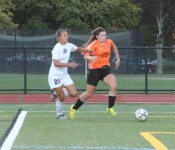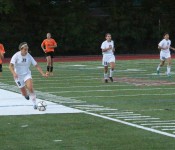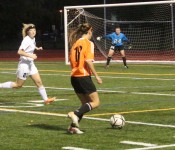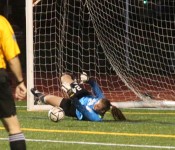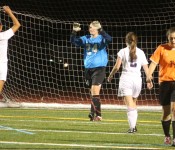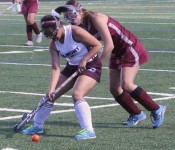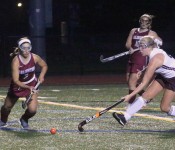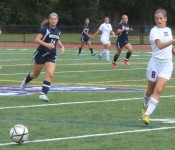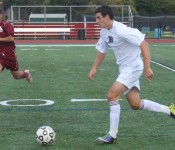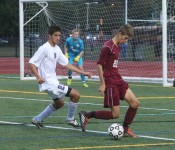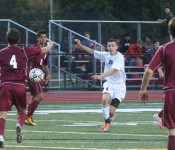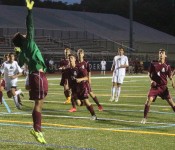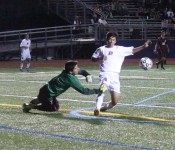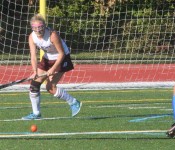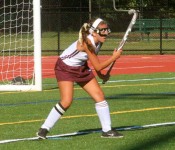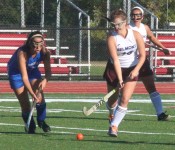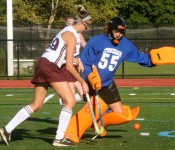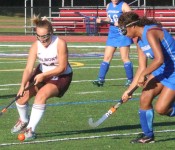Belmont High School Junior Sophie Klimasmith wants nothing better than to see the Girls’ Cross County team that she’s a member head to a division or even state championship meet at the end of the season.
But Klimasmith’s most immediate athletic challenge comes down to a single number: 20.
The Marauder co-captain is seeking to transverse Belmont’s Clay Pit Pond course in less than 20 minutes.
On Tuesday, Sept. 30, the 11th grader came close to breaking “20” over the five kilometer (3.1 mile) multi-loop course.
“I set my PR with a 20 [minute] 10 [second time]. So that’s my big goal,” Klimasmith told the Belmontonian after finishing a strong second in the duel meet against Arlington High School which Belmont won, 18-39, by taking five of the first six spots ran on a cool, wet afternoon, perfect weather for running cross country.
The win leaves Belmont with a sterling 3-1 record with only a one point loss to perennial powerhouse Reading Memorial High School its only blemish.
“The team is very strong this year,” said Klimasmith, pointing to its strong junior class leading the way both on the course and within the team. Belmont’s key is co-captain Leah Brams, who has yet to loss a race in the Middlesex League, winning a pair of league crowns and finishing among the top runners in two previous state finals.
“She’s the fast one,” said Klimasmith of Brams, who cruised in Tuesday’s race coming home in 19:35. “She sets a very high standard but that’s good because it’s something to aim for.”
Klimasmith has taken over the role of the consistent strong “second” – the runner who can challenge the opponent’s best and bring home a “low” number (cross country is scored where first place earns “one” point, second “two” points and so on) for the team.
Following behind Klimasmith the entire season has been fellow 11th graders Meredith Hughes (4th in 20:54) and Carly Tymm (5th, 22:23). The surprise this year has been freshman Camilla Carere who usually rounds out Belmont’s top five (6th on Tuesday in 22:30). Snagging 10th and 11th were junior Madison Kells and freshman Seneca Hart (22:55 and 23:01)
“We are building a much stronger core. It would be great if our top ten runners were closer together but we have a few injuries including [sophomore] Elizabeth Stiletto who was very strong last year,” said Klimasmith.
Head coach Brian Dunn said the team “will be challenged by Woburn and Lexington in the regular season but we feel that we will have a much better result in the league championship where we’d like to give Reading a much stronger challenge.”
Klimasmith said cross country is one sport that doesn’t cut anyone who wants to be on the team.
“And that’s nice because you’re not based on how many goals you scored. It’s just your choice to be there. And our team reflects that because the faster runners don’t just hang out together. We feel like a real team,” she said.
Over on the boys’ side, Belmont senior Ari Silverfine is running with the league best this season, which on Tuesday meant staying with Arlington’s Andrew Peterson until the final home stretch as the Marauders were on the long end of a 18-37 defeat to the Spyponders.
Boys’ Soccer falls to pumped up Winchester
Simply put, the visiting Sachems of Winchester outplayed the host Marauders in a mostly one-sided affair on Tuesday night, Sept. 30 at Harris Field.
The 2-0 final score was somewhat deceiving as Winchester had several clear cut goal-scoring opportunities – including hitting the crossbar – denied by Belmont’s senior goalkeeper Peter Berens including a pair of shots from within the goal box.
Belmont could never find a rhythm to their offense as Winchester’s speed along the front line and midfield prevented the Marauders from switching the field of play moving forward. Belmont’s defense was under siege for most of the match.
At one point in the second half with his team pressuring the hosts, the Winchester head coach called out “Pour it on, Black.” (referring to the color of the team’s away uniform). And they did.
